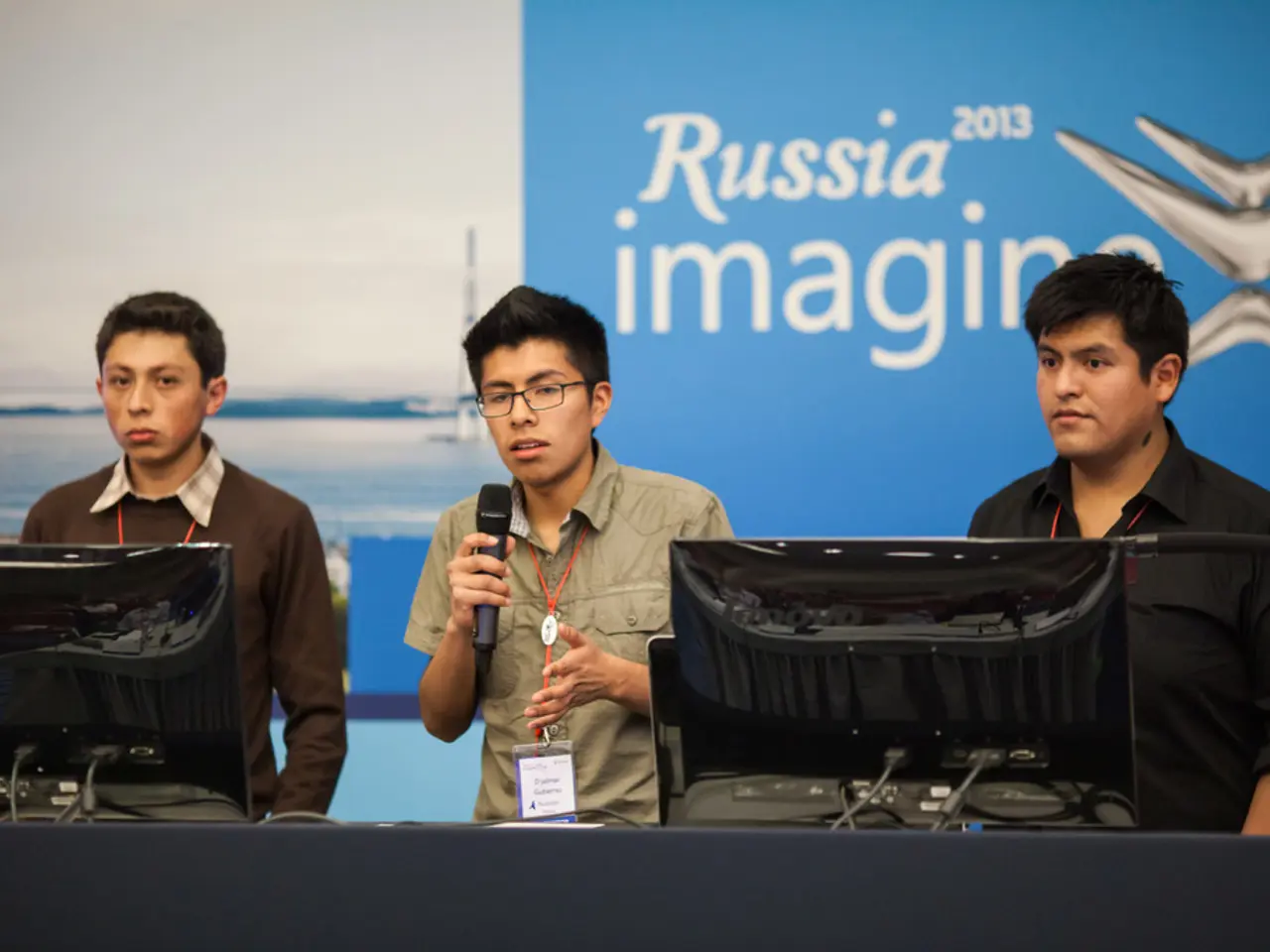Uncovering the authenticity: Can the selection process discern deepfakes from the real deal?
In the modern world of remote hiring, a poor candidate experience during the screening process can influence the candidate's decision to reject a role. To ensure a well-designed candidate gateway, identity verification should be seamless, accessible, and inclusive, offering support for non-native English speakers and accommodating different accessibility needs.
Best practices for AI-resistant identity verification and screening in remote hiring focus on a coordinated, multi-layered approach. This strategy combines sophisticated document checks, biometric validation with liveness detection, database cross-referencing, and behavioral monitoring. The goal is to confirm real human presence and prevent sophisticated AI-generated fraud and synthetic identities.
Key Components of AI-Resistant Identity Verification
- Document Verification with Intelligence: Advanced analysis of documents for micro-printing, holographic security features, consistency across multiple data points, and real-time cross-referencing with issuing authorities helps prevent forgeries and fabricated documents.
- Database Verification and Cross-Referencing: Checking applicant information against authoritative government or trusted registries can detect synthetic or AI-generated identities that do not exist in official records.
- Biometric Verification with Liveness Detection: 3D facial mapping, motion detection, randomized human-response prompts, and behavioral biometrics ensure the individual is physically present and cannot be spoofed by photos, videos, deepfakes, or masks. Live video verification with human agents can also add a strong layer of security by verifying behavior and coercion signs.
- Multi-Factor Authentication (MFA) and Passkeys: Mandating MFA methods that include biometric selfie-ID matched to government-issued IDs or use verifiable digital credentials stored in decentralized digital wallets can resist AI-assisted identity fraud while preserving user control.
- Continuous and Risk-Based Monitoring: Authentication should not end at onboarding; continuous behavioral analysis of user actions, access patterns, and risk-scoring can detect later attempts at fraud or account takeovers.
- Use of Decentralized and Blockchain-Based Identity Systems: Emerging best practices leverage blockchain to provide tamper-proof, user-controlled digital identities, reducing reliance on centralized authorities vulnerable to AI-aided attacks.
- Compliance and Privacy Considerations: Practices must align with regulations such as GDPR, CCPA, and AI-specific legal frameworks to ensure data privacy, consent, transparency, and fairness while combating AI-enhanced fraud.
In summary, a multi-layered identity proofing system integrating biometric liveness detection, database cross-checks, continuous monitoring, and decentralized digital credentials is the best approach for remote hiring. This approach aligns with authoritative frameworks like NIST SP 800-63-A and industry-leading financial and compliance practices, designed specifically to resist AI-generated identity attacks and fraud.
The Role of Mathew Armstrong
Mathew Armstrong, CEO of Giant Screening, a UK-based background screening provider and a member of the Professional Background Screening Association (PBSA), contributes regularly on screening and onboarding standards, compliance, and the candidate experience.
Consequences of Neglecting AI-Based Identity Fraud
Neglecting AI-based identity fraud can lead to regulatory risk, safeguarding gaps, operational disruption, and trust breakdown. The screening process is often the first meaningful interaction a candidate has with an organization, and candidate expectations for screening processes are high, requiring security, intuitiveness, mobile-friendliness, and inclusivity.
In 2024, 85% of identity fraud attempts involved AI generation or manipulation. Modern identity verification tools can expedite the hiring process by automatically clearing genuine candidates and flagging high-risk cases. Employers have a responsibility to protect more than just compliance, safeguarding their culture, reputation, and people.
Modern screening technology should include liveness detection, biometric facial matching, tamper detection, deepfake identification, and ongoing adaptation to respond to emerging fraud techniques. Deepfakes, synthetic faces, and tampered documents are being used to infiltrate hiring systems. Verifying identity correctly from the beginning is crucial to safeguarding an employer's culture, reputation, and people.
Employers should ask themselves if their current checks are fit for today's risks, capable of distinguishing a real candidate from an AI-generated one, and if they are confident in their initial decision regarding candidate admission. The use of AI-generated avatars for job interviews has become common.
In conclusion, the importance of AI-resistant identity verification and screening in remote hiring cannot be overstated. Employers must adapt to these evolving threats to protect their organizations and ensure a positive candidate experience.
In the context of remote hiring, education and self-development opportunities for HR professionals should emphasize the importance of AI-resistant identity verification, including document verification with intelligence, database verification and cross-referencing, biometric verification with liveness detection, multi-factor authentication, continuous and risk-based monitoring, use of decentralized and blockchain-based identity systems, compliance and privacy considerations, and the employment of modern screening technology for liveness detection, biometric facial matching, tamper detection, deepfake identification, and ongoing adaptation.
With the increasing use of AI-generated avatars for job interviews, business leaders must focus on finance and technology innovations to confirm real human presence and prevent sophisticated AI-generated fraud and synthetic identities, while ensuring a seamless, accessible, and inclusive candidate gateway to foster a positive candidate experience, thereby maintaining a reputation of trust and credibility in the modern world of remote hiring.




